How SpaceX's 2018 Moon Flight Will Work
A return to the moon
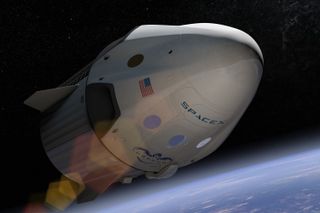
Nearly 45 years after NASA astronauts last embarked on a lunar mission, SpaceX CEO Elon Musk has announced his company's plans to send two private citizens on a flight around the moon in 2018. The weeklong trip will look a lot like NASA's historic Apollo 8 mission — the first and only purely circumlunar, crewed mission in history — but SpaceX's mission will fly with two crewmembers instead of three, and will use a fresh new spacecraft and launch vehicle. Read on to see what SpaceX's lunar adventure will entail.
Up first: Launch
Launch
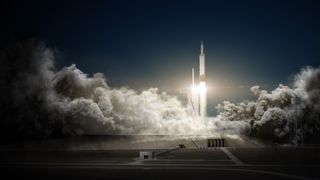
SpaceX's new Falcon Heavy rocket will launch the crewed Dragon 2 spacecraft to the moon. The rocket and crew capsule have not flown on any missions yet. But the Falcon Heavy is slated to blast off for its first test launch this summer, and the Dragon 2 will make its first test flight in November. [VIDEO: SpaceX to the Moon - 2018 a Lofty Goal?]
The Falcon Heavy is a variation of SpaceX's Falcon 9 rocket, which was made to carry the uncrewed Dragon spacecraft to and from the International Space Station. With two extra boosters strapped to its sides, the Falcon Heavy will be the most powerful rocket to blast off since NASA's Saturn rockets, which were retired in the early 1970s.
Up next: To the moon!
Cruise to the moon

In all, SpaceX's lunar mission will last approximately one week, Musk said in a phone conference, so it might take two to three days to get to the moon. When the Apollo 8 astronauts successfully entered lunar orbit, they had been traveling for two days and 21 hours. On average, the moon is 238,855 miles (384,400 kilometers) away from Earth.
The trip will likely involve at least one midcourse correction to keep the spacecraft heading in the right direction. Because the spacecraft will be mostly automated, the passengers will likely spend the duration of the trip sitting still and waiting — and looking out the windows! Just in case anything goes wrong, though, the crew will be trained to handle emergency procedures and could possibly have to do some manual flight operations.
Up next: Skimming the surface
Skimming the surface
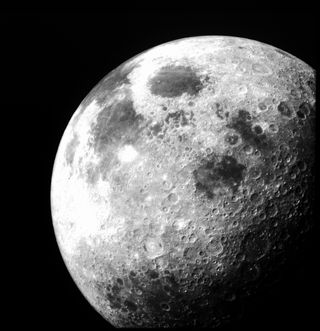
Musk said the crewed Dragon spacecraft "would skim the surface of the moon" before heading "further out into deep space." The spacecraft won't literally touch the lunar surface, though. When Apollo 8 made its closest approach to the moon, the astronauts were at an altitude of 68.2 miles (110 km) above the lunar surface. This close approach happened 73 hours and 35 minutes into the mission as the spacecraft's engines briefly ignited to round out the orbit. This resulted in a nearly circular orbit at an altitude of about 70 miles (112 km).
Up next: Loop-de-loop
Loop around the moon

During the circumlunar mission, SpaceX's Dragon capsule will make one big, long loop around the moon that will take the passengers into deep space. Musk suggested that the capsule will then orbit the moon like the Apollo 8 astronauts did, but he didn't specify the number of orbits. Apollo 8 entered lunar orbit on Dec. 24, 1968, and traveled around the moon 10 times before beginning the journey back to Earth about 20 hours later.
Up next: Free return trajectory
Free return trajectory
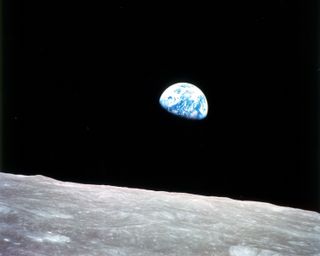
After circling the moon for a duration yet to be determined, the Dragon capsule will ignite its engines and begin to maneuver away from the moon and head back toward Earth. This step in Apollo 8's flight was called the "trans-Earth injection."
Up next: Cruise home
Cruise back to Earth

Coasting back to Earth will take about as long as the two- to three-day cruise to the moon. Again, the spacecraft will likely perform at least one midcourse correction to ensure that it's right on track for a precise landing.
Up next: Re-entry
Re-entry
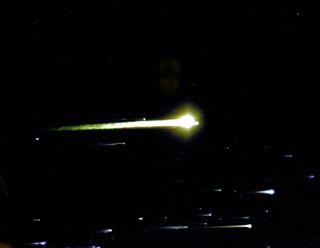
Aside from launching, this will be the most challenging step in the entire mission. Re-entry is a dangerous process that can be deadly when done wrong. As the spacecraft begins the plunge into Earth's atmosphere, a heat shield will keep the passengers from getting too toasty. When Apollo 8 returned from its circumlunar mission, it entered the atmosphere at nearly 25,000 mph (40,000 km/h).
Up next: Splashdown or touchdown?
Splashdown or touchdown
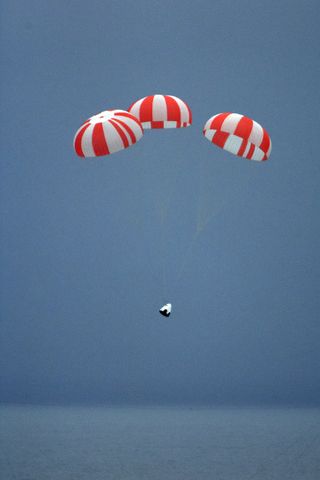
There are two ways the Dragon capsule might land on Earth: a touchdown on land, or a splashdown in the ocean. SpaceX has designed the crewed Dragon to be able to touch down on land using a combination of parachutes and retropropulsion, in which the spacecraft fires its engines to slow down the same way the Falcon 9 rocket sticks upright landings. But SpaceX also says the Dragon can land anywhere in the world, including on water. A splashdown in the ocean might be easier to plan for, considering that 71 percent of Earth is covered in water. Apollo 8 splashed down in the Pacific Ocean just south of Hawaii on Dec. 27, 1968.
Up next: The crowd goes wild!
The crowd goes wild!
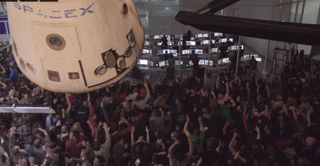
If everything goes according to plan, people all over the world will rejoice after this historic mission. It will be the first time a private spaceflight company has ever sent people to space and the first time any person will have visited the moon since 1972 — and that's a pretty big deal! And if past SpaceX missions are any example of how the folks at the company will react, it's probably safe to say that Musk and his colleagues will totally freak out. [Elon Musk Shows Childlike Joy (and Dread) in Rocket-Landing Video]
Join our Space Forums to keep talking space on the latest missions, night sky and more! And if you have a news tip, correction or comment, let us know at: community@space.com.
Get the Space.com Newsletter
Breaking space news, the latest updates on rocket launches, skywatching events and more!

Hanneke Weitering is a multimedia journalist in the Pacific Northwest reporting on the future of aviation at FutureFlight.aero and Aviation International News and was previously the Editor for Spaceflight and Astronomy news here at Space.com. As an editor with over 10 years of experience in science journalism she has previously written for Scholastic Classroom Magazines, MedPage Today and The Joint Institute for Computational Sciences at Oak Ridge National Laboratory. After studying physics at the University of Tennessee in her hometown of Knoxville, she earned her graduate degree in Science, Health and Environmental Reporting (SHERP) from New York University. Hanneke joined the Space.com team in 2016 as a staff writer and producer, covering topics including spaceflight and astronomy. She currently lives in Seattle, home of the Space Needle, with her cat and two snakes. In her spare time, Hanneke enjoys exploring the Rocky Mountains, basking in nature and looking for dark skies to gaze at the cosmos.
